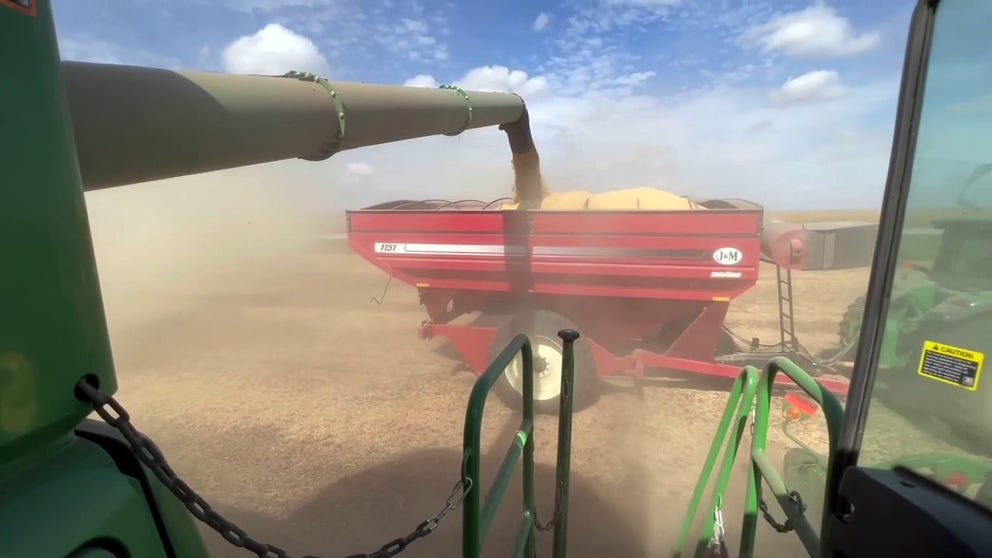Nebraska farmers on track for record-high harvest despite wild weather swings
Farmers credit the resiliency of their crops to the wild weather on hybrid seeds made to adapt to the new changing environment
Nebraska farmers on track for record-high harvest despite wild weather swings
The weather this summer has made it challenging for farmers on the Great Plains. From drought, storms, hail, and wind, crops have seen it all. However, their large yield is a positive surprise for many in the region.
DAVID CITY, Neb. – In the autumn, the festive sounds of college football reverberate across America’s heartland, but there’s also the collective buzz of hard work and a job well done.
From the rumbling engines bringing in the harvest to the trucks hauling crops from the fields to the grain elevators, it’s harvest season for Nebraska farmer Hank Klosterman and his team. Their tractors have been busy ripping corn and soybean from the fertile growing lands of the Great Plains.
"It’s definitely been a surprise at how good the yields have turned out," Klosterman said. "Pretty wild swings in weather. And if you look at it, we get an arid fall, but we get an extremely humid summer. There (are) big swings in weather."
The elements are always a battle, especially these days from drought, severe storms dropping hail, snow, and strong winds.
"Compared to 20 years ago, it seems like things are different to what they are now," said Matt Gangwish, who has been out in his Nebraska fields for over two decades.
Like others in the area, Klosterman and Gangwish have constantly been adapting.
"It seems like it’s getting more extreme. You know, the weather patterns have been up and down. We have gone from extreme cold to extreme heat. Seeing more natural disasters, and there is definitely a change in the weather but not to say it’s outside the history of the earth," Klosterman said.
Extreme drought conditions in the western United States made their way to the upper Midwest, leading to thirsty crops this past summer.
"We are lucky in Nebraska to have irrigation if we don’t get that rain, but you never know. This field got hailed on at least twice, and one was just a few weeks ago," Gangwish said.
Working with Mother Nature is proving to be a complicated dance of technology, science, and ingenuity.
"We are definitely adhering to the technology whether it be confined fed animals or different feeding practices using different feed additives," Klosterman said. "Those are ways that we are somewhat hedging into the weather."
The advancement in corn and soy seeds engineered to sustain wild weather patterns has been an industry lifesaver for years.
Farmers must continue to monitor the weather so closely because 80-90% of corn and soybean production is grown in the breadbasket of America and then transported around the globe.
Despite the extreme swings in 2021, farmers across the Midwest are on track for near record-high harvests of corn and soybeans.
"Long extended dry patterns throughout the summer, and unexpectedly, it turns out the yields are really good. We had timely rains," Klosterman said.
It’s all in an effort these farmers undertake during months of hard work in a stand against the environment to feed the world and nurture the land they work.






